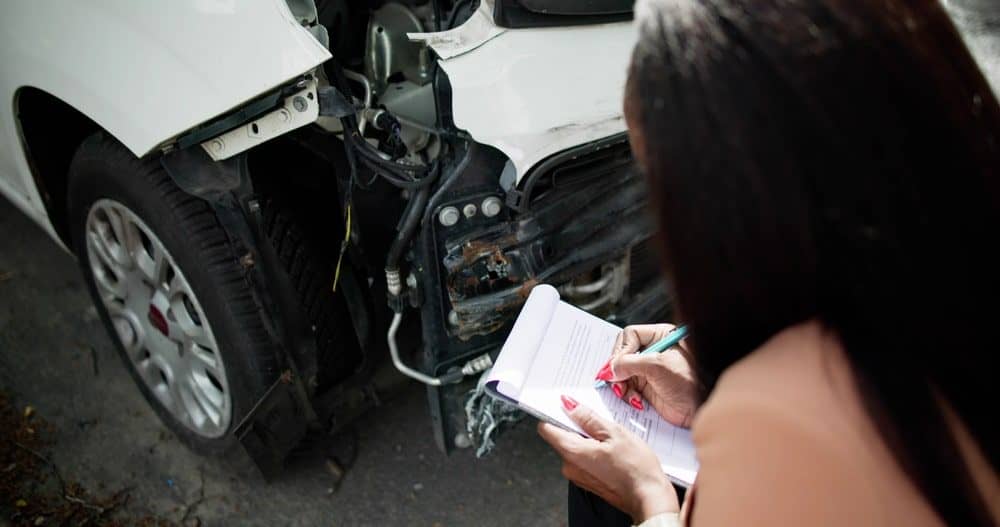Following an accident involving a serious injury, the personal injury claims process that insurance companies usually adopt is designed to delay, devalue, or deny valid claims. Insurance adjusters may sound empathetic, but they will work to minimize the fair compensation you’re owed for your medical expenses, lost wages, and pain and suffering.
The insurance adjuster will set the tone to minimize your expectations and look for information that they could use against you later. While you’re faced with mounting medical bills and physical and emotional challenges, you don’t have to directly fight the tactics insurance companies use. Instead, let an experienced personal injury lawyer from Gingras, Thomsen & WAchs negotiate a fair settlement for you.
Here are some of the common tactics insurance companies may use:
Challenging the Necessity of Your Medical Treatment
If you have suffered serious injuries for which you’re seeking compensation, be ready for the adjuster to use the “causation denial” tactic, i.e., claim your injuries were minor or that your treatment was excessive, unrelated, or unreasonably prolonged.
There are numerous internal medical consultants and independent physicians out there who almost exclusively work with insurance companies to find ways to discredit injury claims. You might be asked to undergo an independent medical examination (IME), which is anything but.
If your physical therapy lasted three months, they may claim only four weeks were “medically necessary.” If you received injections or MRIs, they might argue these were non-standard or performed too soon.
Not to mention, they will almost certainly comb through your complete medical history to identify pre-existing injuries and health conditions, and argue that your symptoms stem from them (not caused by the accident). Framing your injuries as exaggerated or unrelated is the easiest way for them to reduce your claim value.
Hiring an “Independent Medical Examiner” to Reject Your Treatment
An independent medical examiner is someone you have never seen and who has never examined you, but they’re brought in to retroactively question your treating physicians’ decisions. This is one of the common insurance company claim tactics to devalue insurance personal injury claims.
If you’re receiving chiropractic care, physical therapy, or pain management after a crash as instructed by the medical team treating your injuries, the insurance provider might commission a “utilization review” where their chosen physician reviews your file. That doctor, paid by the insurer, might conclude your treatment was “not medically necessary” beyond a certain number of visits.
Shifting Blame to You Through Modified Comparative Negligence
Wisconsin follows a modified comparative negligence rule, under which you’re barred from recovering any compensation if you’re 51% or more at fault for the accident. This naturally gives insurers a strong incentive to push fault past the 50% threshold and decrease what they owe in proportion to the percentage of fault assigned to you.
In a rear-end collision, where liability seems quite obvious, the claims analyst might argue you contributed to the crash by suddenly stopping, having malfunctioning brake lights, or failing to maintain a safe lane position. For instance, if you’re found to be 40% at fault, your compensation could be reduced by 40%.
For insurance claim devaluation, they may cherry-pick facts from the police report, misinterpret traffic laws, misquote witness statements, or question medical records. Sometimes, they rely on incomplete or biased crash diagrams to make it look like you had more control over the outcome than you realistically did.
Using Bureaucracy to Pressure Low Settlements
Perhaps nothing is more effective for insurance claim devaluation than burying the claimant in red tape, taking weeks (or months) to respond, and routinely “losing” documents or requesting the same records multiple times. The more they can stall, the faster they can wear you down.
People who have been injured and have missed work, unpaid medical bills, or car repair costs to worry about are sometimes desperate enough to accept a lowball offer just to make the ordeal end.
The incredibly minimal amount of money offered by insurance companies early in the process has a name; it’s known as a “nuisance offer.” If they know you’re struggling to pay your bills and might accept the money without realizing the long-term costs of your injury, what do they have to lose?
Undermining Your Credibility by Surveilling Your Social Media
What you post online, or how you appear in public, can be taken out of context and used to argue that you aren’t as injured as you claim to be.
If you post a photo smiling at a family event, for instance, they might claim you aren’t in physical or emotional distress. If you’re tagged in a hiking photo two weeks after your accident (even if the photo was taken months before), that image can be submitted as evidence to dispute your pain or mobility limitations.
Using Prior Statements and Paperwork Against You
If there’s one thing a personal injury attorney will tell you to do to protect your interests, it’s to never sign any documents and speak to anyone (including the insurance company) about your accident without legal counsel present.
One of the first things the at-fault party’s insurer will do after an accident is request a recorded statement to get your side of the story. Don’t fall for it. It’s an officially recorded interview with questions intended to downplay your injuries, admit uncertainty, or say things that can be twisted later.
You might think you’re exchanging polite pleasantries with the adjuster when saying you’re feeling okay at the moment. But if you end up developing symptoms later, that single phrase could become their basis for arguing your injuries didn’t come from the crash. You might inadvertently say something to suggest negligence on your part, regardless of the other driver’s fault.
Exploiting Policy Limits You Didn’t Know Existed
Many car accident claimants don’t realize until it’s too late that the at-fault driver’s insurance policy has a low liability limit. And insurance uses that to their full advantage. If the policy only covers $25,000 in bodily injury and your damages are much higher, they will rush to tender the limits and walk away, regardless of how catastrophic your injuries are.
Worse, they may delay confirming policy limits until months into your treatment, stringing you along during negotiations without disclosing that there’s a cap on what they will pay because they aren’t legally required to tell you upfront in Wisconsin.
In some cases, they also challenge whether their policy even applies. If the at-fault driver borrowed someone else’s car or was using the vehicle for work (e.g., Uber), the insurer may argue there’s no coverage under their policy.
Schedule a Free Consultation with a Personal Injury Attorney in Wisconsin
At Gingras, Thomsen & Wachs, our seasoned car accident lawyers will move fast to collect medical evidence, police reports, photos and videos, surveillance footage, witness statements, and build a strong claim for damages against the at-fault party. We’re aggressive negotiators, and we won’t back down against pressure from the insurance company.
If the insurance company is determined to refuse a fair settlement offer for your injuries and losses, our attorneys are fully prepared to take the legal battle to the courtroom. We leave no stone unturned to recover damages for injury victims. To schedule your free consultation, call us at 855-954-1186 or contact us online.






